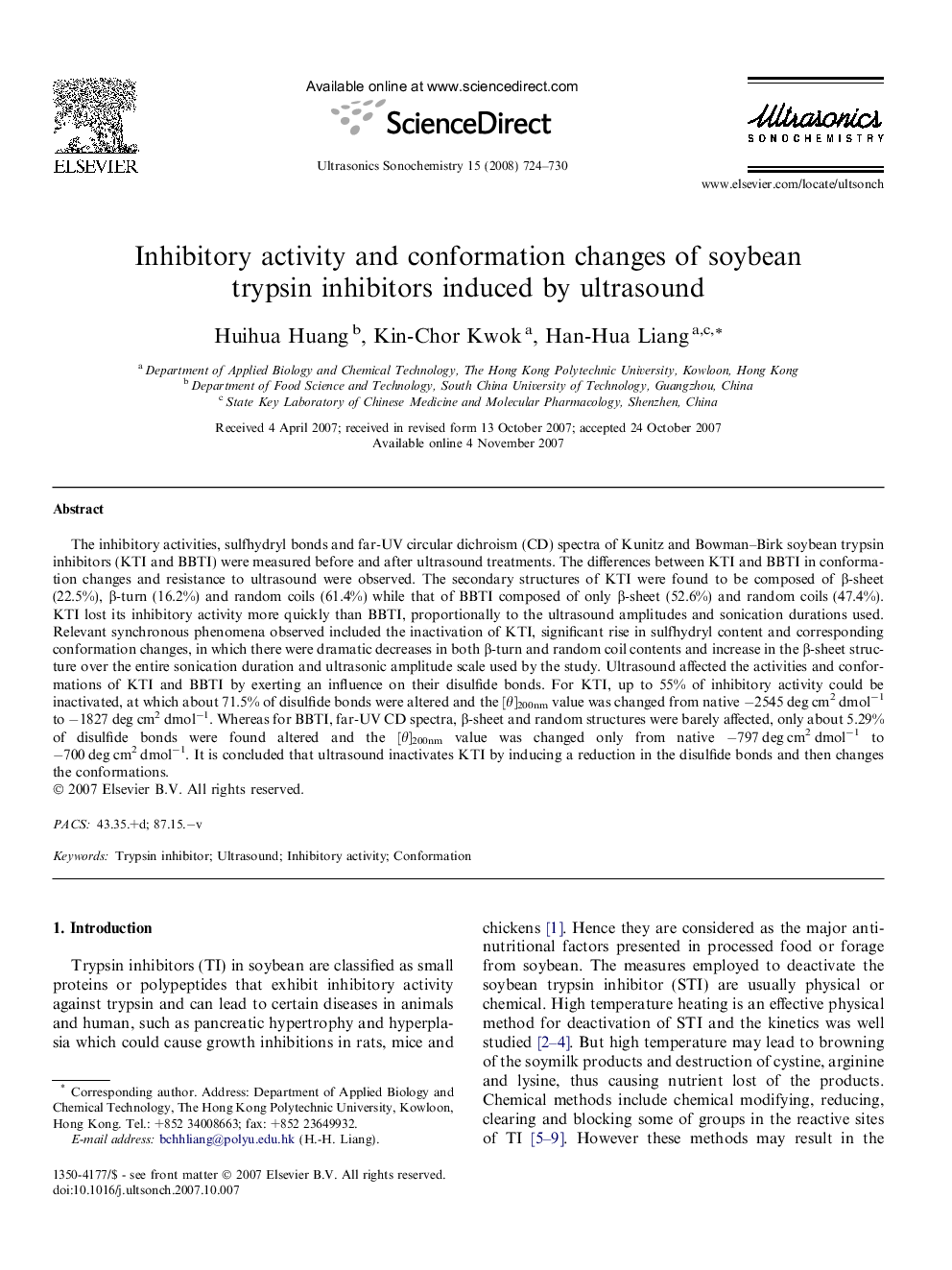| Article ID | Journal | Published Year | Pages | File Type |
|---|---|---|---|---|
| 1266502 | Ultrasonics Sonochemistry | 2008 | 7 Pages |
The inhibitory activities, sulfhydryl bonds and far-UV circular dichroism (CD) spectra of Kunitz and Bowman–Birk soybean trypsin inhibitors (KTI and BBTI) were measured before and after ultrasound treatments. The differences between KTI and BBTI in conformation changes and resistance to ultrasound were observed. The secondary structures of KTI were found to be composed of β-sheet (22.5%), β-turn (16.2%) and random coils (61.4%) while that of BBTI composed of only β-sheet (52.6%) and random coils (47.4%). KTI lost its inhibitory activity more quickly than BBTI, proportionally to the ultrasound amplitudes and sonication durations used. Relevant synchronous phenomena observed included the inactivation of KTI, significant rise in sulfhydryl content and corresponding conformation changes, in which there were dramatic decreases in both β-turn and random coil contents and increase in the β-sheet structure over the entire sonication duration and ultrasonic amplitude scale used by the study. Ultrasound affected the activities and conformations of KTI and BBTI by exerting an influence on their disulfide bonds. For KTI, up to 55% of inhibitory activity could be inactivated, at which about 71.5% of disulfide bonds were altered and the [θ]200nm value was changed from native −2545 deg cm2 dmol−1 to −1827 deg cm2 dmol−1. Whereas for BBTI, far-UV CD spectra, β-sheet and random structures were barely affected, only about 5.29% of disulfide bonds were found altered and the [θ]200nm value was changed only from native −797 deg cm2 dmol−1 to −700 deg cm2 dmol−1. It is concluded that ultrasound inactivates KTI by inducing a reduction in the disulfide bonds and then changes the conformations.
